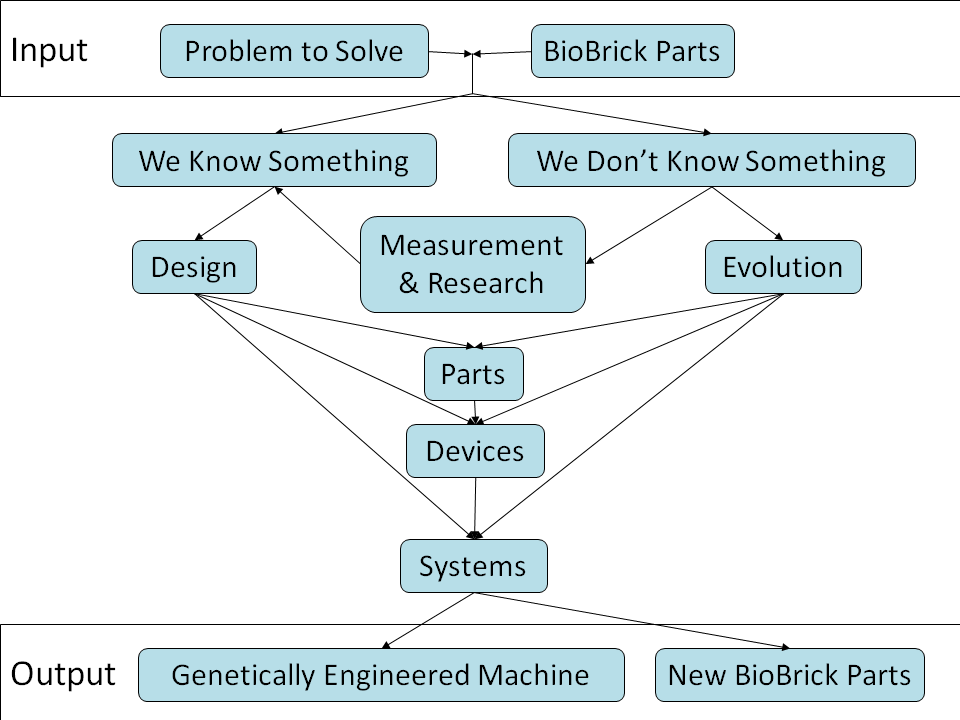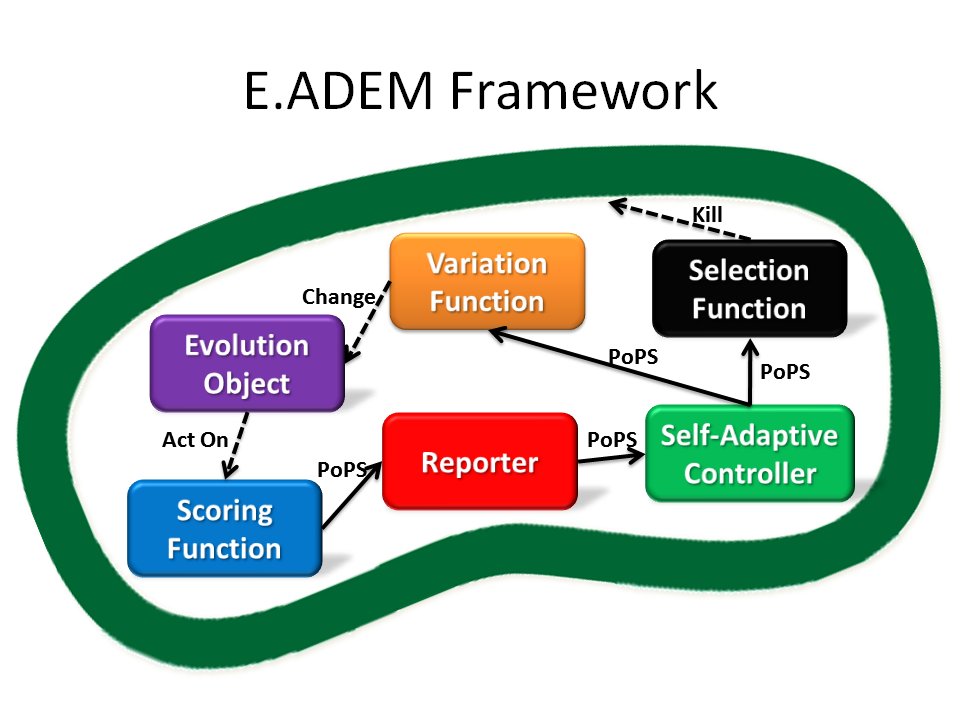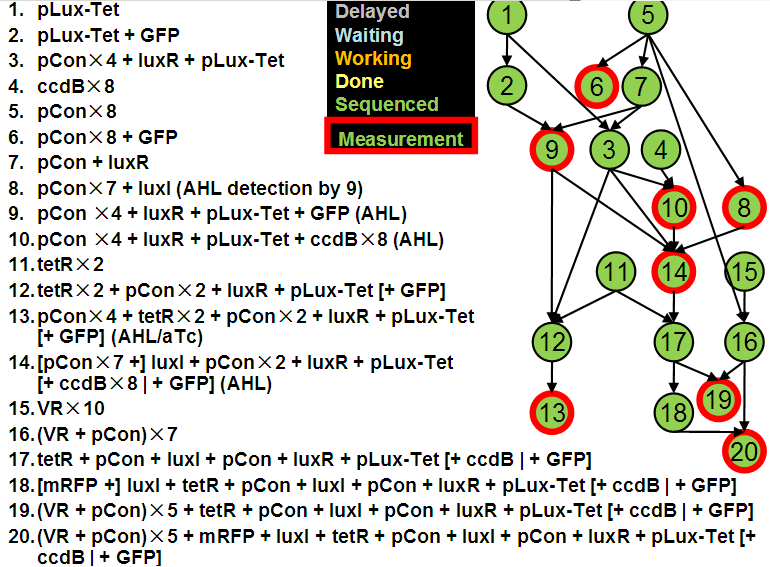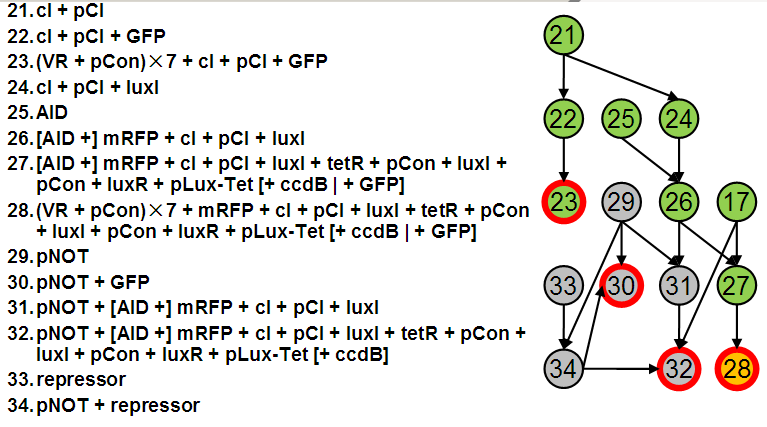Team:USTC/Project
From 2009.igem.org
Cherrytree (Talk | contribs) |
Cherrytree (Talk | contribs) |
||
| Line 89: | Line 89: | ||
=== Constitutive Promoter Family as Stimulus Signals === | === Constitutive Promoter Family as Stimulus Signals === | ||
<p>We choose to use constitutive promoters instead of the IPTG-induced expression as the stimulus signals to test the system. The stimulus signals in a testing system are supposed to be definite and stable. However, the IPTG-induced sigals are susceptible to many environmental factors. The process of inducible expression involves a series of dynamic actions in physical chemistry: the diffusion process of IPTG molecule, and the equilibruim between the attachment and disattachment of IPTG to the promoter. That way, the expression signals would fluctuate in a large scope in experiments and the mathematic analyses would be very complicate.</p> | <p>We choose to use constitutive promoters instead of the IPTG-induced expression as the stimulus signals to test the system. The stimulus signals in a testing system are supposed to be definite and stable. However, the IPTG-induced sigals are susceptible to many environmental factors. The process of inducible expression involves a series of dynamic actions in physical chemistry: the diffusion process of IPTG molecule, and the equilibruim between the attachment and disattachment of IPTG to the promoter. That way, the expression signals would fluctuate in a large scope in experiments and the mathematic analyses would be very complicate.</p> | ||
| - | <p>Comparatively, the stimulus signals based on the different constitutive promoters are far stabler since the process are relatively direct. We have characterized the constitutive promoter family in detail and the measurements and the results are described in the registered parts.</p> | + | <p>Comparatively, the stimulus signals based on the different constitutive promoters are far stabler since the process are relatively direct. We have characterized the constitutive promoter family in detail and the measurements and the results are described in the registered parts[https://2009.igem.org/Team:USTC/Parts].</p> |
---- | ---- | ||
Revision as of 08:51, 21 October 2009
| Home | Team | Project | Modeling | Parts | Standard & Protocol | Software Tool | Human Practice | Notebook |
|---|
Team:USTC/Project
Contents |
The Background
Evolution vs. Design
Evolution and design are two sides of the coin.
Until 150 years ago, people believed that we are designed and created by the God, a god, gods or other [http://en.wikipedia.org/wiki/Intelligent_designer intelligent designer]s. After [http://en.wikipedia.org/wiki/Charles_Darwin Charles Darwin]'s [http://en.wikipedia.org/wiki/On_the_Origin_of_Species On the Origin of Species] in 1859, more and more people began to realize that a god is not necessary. During the process of evolution, we can be created automatically, without any intelligence.
[http://en.wikipedia.org/wiki/Design Design] and [http://en.wikipedia.org/wiki/Engineering engineering] are processes with the need of knowledge. Before we can design a machine, we have to know everything about the possible parts. If any information is unknown, we have to learn it. If nobody knows it, we have to measure it by ourselves. If all the knowledge needed are too much, we have to collaborate with others. [http://en.wikipedia.org/wiki/Computer-aided_design Computer-aided design] have to be used to accomplish more complex tasks. [http://en.wikipedia.org/wiki/Space_Shuttle Space shuttle] and [http://en.wikipedia.org/wiki/Microprocessor microprocessor] are seen as the most complex systems engineered, but they are far too simple when compared with the [http://en.wikipedia.org/wiki/Complexity complexity] of biological systems created by evolution.
On the other side, [http://en.wikipedia.org/wiki/Evolution evolution] is a completely different process. Variation is random, selection is directional based on the fitness to the environment, that is all. However, all the amazing things on our planet is emerged from this simple process, no more thing is needed.
Why? All the complexity is solved by this simple process without any input of knowledge?
Yes. The answer is on the scale. The evolution process is so simple that it can be scaled up infinitely. The complex problem can be solved in the distributed evolution system. Any success in the distributed system can be amplified by the selection process. Therefore, although the variation is random, it will be powerful enough to search for the solutions, when the scale of the system is big enough.
In the design process, the variation is directional based on the knowledge, but the process is not scalable, because of its requirement of intelligence. As a result, it is much more difficult to solve complex problems by design.
Directed Evolution
Although Darwin's theory was published 150 years ago, people have used the power of evolution more than ten thousand years. [http://en.wikipedia.org/wiki/Domestication Domestication] of plants and animals is done by [http://en.wikipedia.org/wiki/Artificial_selection artificial selection], which is the process of intentional breeding for certain traits, therefore changing the direction of evolution.
[http://en.wikipedia.org/wiki/Directed_evolution Directed evolution] is a method using the similar principle to create new biomolecules with desired properties. The targets of directed evolution include enzymes, antibodies, [http://en.wikipedia.org/wiki/Aptamer aptamer]s, [http://en.wikipedia.org/wiki/Ribozyme ribozyme]s, biosynthetic pathways, and synthetic genetic circuits. More information can be found on [http://www.che.caltech.edu/groups/fha/home.html the Frances H. Arnold research group], [http://ellingtonlab.org the Ellington lab], and [http://genetics.mgh.harvard.edu/szostakweb/ the Szostak lab].
The directed evolution experiment contains several rounds of 3 steps: variation, selection, and amplification. Variation is the mutation or recombination of the information encoded in the DNA, usually by error-prone PCR and [http://en.wikipedia.org/wiki/DNA_shuffling DNA shuffling] respectively. Selection is the process of separating the variants with desired phenotypes from others, it can either refer to screening (isolate good variants) or selection (eliminate bad variants), either in vivo or in vitro. Amplification is the replication of the variants after selection, which recovers the population size for the new round of directed evolution.
New function of biomolecules or biological systems is difficult to be rationally designed, but directed evolution is successfully used in solving these problems.
Evolutionary Approaches in iGEM Projects
In iGEM competition, teams specify, design, build, and test simple biological systems made from standard, interchangeable biological parts. Most projects engineer the systems by modeling and measurement, including this project itself. This engineering approach is proved to be feasible but difficult in the design of biological systems during this years.
Evolutionary Biology, Population Genetics & Evolutionary Algorithm
Problems to Be Solved
The Blueprint
The Goal
Modules & Flow Chart of the System
Scoring Function
Self-Adaptive Controller
Variation Function
Selection Function
Repoter
The Prototype
What to Do First?
Constitutive Promoter Family as Stimulus Signals
We choose to use constitutive promoters instead of the IPTG-induced expression as the stimulus signals to test the system. The stimulus signals in a testing system are supposed to be definite and stable. However, the IPTG-induced sigals are susceptible to many environmental factors. The process of inducible expression involves a series of dynamic actions in physical chemistry: the diffusion process of IPTG molecule, and the equilibruim between the attachment and disattachment of IPTG to the promoter. That way, the expression signals would fluctuate in a large scope in experiments and the mathematic analyses would be very complicate.
Comparatively, the stimulus signals based on the different constitutive promoters are far stabler since the process are relatively direct. We have characterized the constitutive promoter family in detail and the measurements and the results are described in the registered parts[1].
Design of the Self-Adaptive Controller
Principle of Operation
Vector & Chassis
PSB1A3: high copy number
Top10
MD
Assembly Road Map
In order to keep the whole process in the perspective, we designed maps to direct our work in wet lab.
 "
"




